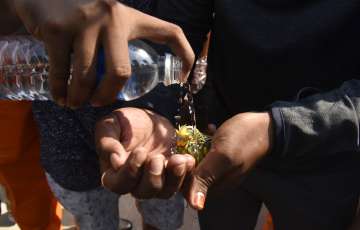A leakage of Styrene gas has already killed 8 people in Visakhapatnam while over a thousand others have been hospitalized. An alarming situation has developed in Visakhapatnam. Prime Minister Narendra Modi has held an urgent meeting with the NDMA while Andhra Pradesh Chief Minister YS Jaganmohan Reddy is on his way to Vizag where he will meet with those affected by the gas leak.
What is Styrene Gas?
Also known as ethenylbenzene, vinylbenzene, and phenylethene, Styrene is an organic compound with the chemical formula C6H5CH=CH2. This derivative of benzene is a colorless oily liquid although aged samples can appear yellowish. The compound evaporates easily and has a sweet smell, although high concentrations have a less pleasant odor.
When the gas leaked in Vizag, hundreds and thousands of people inhaled it and either fell unconscious or started having breathing issues.
What happens when I am exposed to Styrene?
Short-term
- Irritation to the eyes, skin, and nose
- Gastrointestinal effects
- Respiratory effects
Long-term
- Central nervous system and kidney effects
- Headaches
- Depression
- Fatigue and weakness
- Hearing loss
- Balance and concentration problems
- Cancer
Treatment
After you come in contact with Styrene gas, there is only one way to treat the effects of the gas. You have to wash your skin and eyes with water properly and provide breathing support in case of ingestion. The local administration in Vizag has advised people to use wet cloth as a mask to cover nose and mouth to prevent inhalation of the gas.
What is Styrene?
Styrene is a flammable liquid that is used to make polystyrene plastics, fiberglass, rubber, and latex. It occurs naturally in some fruits, vegetables, meats, nuts, and beverages. Styrene is used to make:
- Insulation
- Pipes
- Automobile parts
- Printing cartridges and copy machine toner
- Food containers
- Packaging
- Carpet backing
- Luggage
- Shoes
- Toys
- Floor waxes and polishes
Cigarette smoke and vehicle exhaust contain styrene.
